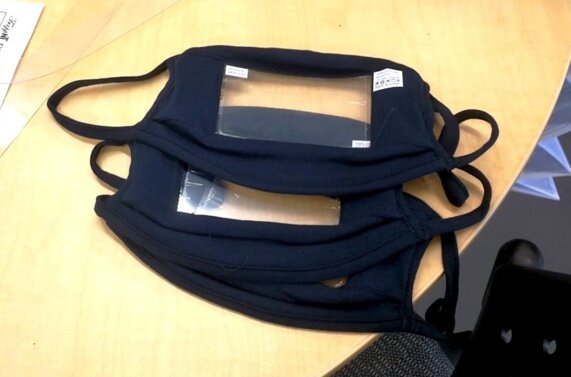For the approximately 466 million people globally who are deaf or hard of hearing, the COVID-19 pandemic has literally added an additional layer to already-difficult communication in the form of traditional cloth face masks.
But companies like Apple and institutions like the University of Texas at Austin have realized the impact opaque masks can have for people who rely on lip reading and facial cues to communicate and are turning to clear face masks for their offices and classrooms.
The Salesforce 360 Blog focused on this workplace access issue for a recent article, Clear Face Masks Are a Must for the Workplace, in which contributing editor Ari Bendersky interviewed Dr. Stephanie Cawthon for her insights and experiences with clear face masks:
Earlier this year, the dean of the college of education asked Stephanie Cawthon, Ph.D., a professor in the college of education who is hard of hearing, what the school could do to help her during the pandemic. She mentioned clear masks and didn’t really think about it again. In late October, Cawthon, who is also the director of the National Deaf Center, returned to campus for the first time since March and was greeted with a pile of clear masks as she entered the office at the college of education.
“If you’re going to teach on campus, you’re going to wear a clear mask,” Cawthon said. “That’s an attitude of, ‘We’re all in this together.’ It’s a simple gesture and it’s now part of the culture here on campus.”
Cawthon is realistic and knows the majority of people around the country will continue to wear cloth masks, but does see clear mask usage increasing in hospitals, doctor’s offices, and schools.
Dr. Cawthon also shared recommendations on communicating with a face mask with Salesforce from the National Deaf Center, which Dr. Cawthon directs.
